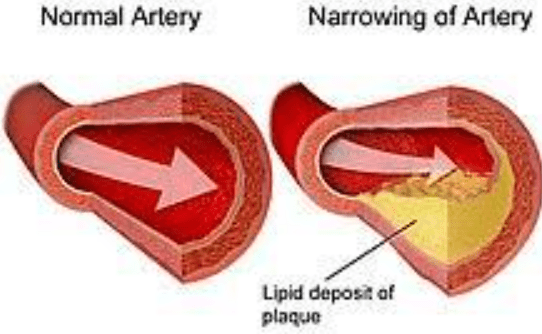Sometimes, we fail to remember a specific term for something and we look for alternatives to define it. Thanks to Google for knowing everything! Well, almost everything! Even if you enter a strange query like “Spectrum internet customer service”, it will understand you, and give you the number to that business’ customer support department. But at times it isn’t that easy and gets quite frustrating especially when it is a medical term.
One such term you may be looking to find is for the abnormal narrowing of an artery – a common but serious condition. Yes, there’s a name for it. It’s called stenosis. Now you must be curious to know what stenosis is. So let’s find out.
What Is Stenosis (The Abnormal Narrowing of an Artery)
Stenosis is a termed by doctors for describing the abnormal narrowing of a blood vessel or any other tube-like structure. It is also sometimes called a stricture, which is a term used for narrowing caused by the contraction of smooth muscles. Stenosis is usually used when the narrowing is caused by a lesion that reduces lumen space.
The location of stenosis actually defines what type it is, which we will explore later on.
Types of Stenosis
Normally, there are 3 types of stenosis:
- Central spinal stenosis
- Lateral Recess Stenosis
- Foraminal Stenosis
Each of these types can occur in any region of the spine (lumbar, cervical, or thoracic).
Central Spinal Stenosis
It is the narrowing of the central ring of the vertebra (which is the space through which your spinal cord passes). Central stenosis is found in the lumbar and cervical regions since they experience the most motion.
Lateral Recess Stenosis
It is the type of stenosis in which narrow occurs around the channels in which nerves traverse before exiting through the foramen. The lateral recess starts where the nerve is generated, right after the spinal cord and before the foramen.
Lateral stenosis affects the nerves which branch the cord and are responsible for movement in the legs, arms, and torso.
Foraminal Stenosis
It is the type of stenosis in which there is a narrowing at the foramen. It refers to the vertebral space through which the nerves branch off the spinal cord. The purpose is to provide motor and sensory function in the torso, legs, and arms.
This type of stenosis occurs in the lumbar and cervical spine because these regions are involved in the movement. The latter part bears the body’s weight. It is also the most common type of spinal stenosis.
Causes of Stenosis
Although some people are born with spinal stenosis (known as congenital spinal stenosis), it usually appears after the age of 50. Stenosis can develop as a result of natural aging and spinal wear and tear.
Some people who have had back injuries or trauma in the past may also end up suffering from Stenosis. The injury could have occurred months or years before the stenotic symptom appeared. Other symptoms that can result in nerve compression include:
- Thickening of spinal ligaments
- Herniated or bulging discs
- Degenerative disc disease
What Are the Symptoms?
When it comes to symptoms, some people don’t experience any pain. On the other hand, spinal stenosis is frequently progressive. The symptoms appear gradually and may worsen up.
The pain and symptoms may travel to another section of the body. Radicular pain, or radiculopathy, is the medical term for this condition.
Some symptoms that you may experience include:
- Neck pain (which can be mild to intense)
- Weakness
- The clumsiness of the hands
- Lower back pain (can be mild to intense)
- Buttock or leg pain
- Painful to walk, bend or stand
- Burning, tingling, and numbness sensations
- Bowel dysfunction
- Loss of function
What’s the Diagnosis?
Consult a specialist if you’re experiencing neck or back pain, have pre-existing spinal stenosis, or have a changing spinal disease. A correct diagnosis is necessary for a successful and effective treatment plan.
When you visit the doctor, they will perform physical and neurological exams and ask about your medical history. Do let them know the symptoms you are experiencing and how severe they are. The doctor might recommend you physical therapy depending on how weak your muscles have become. He might also test your reflexes for elevating any muscle weakness, loss of feeling, and signs of a neurological injury.
The diagnostic test includes MRI scans, CT, X-rays, and myelography for examining the spine properly.
Treatment Options
The good is, stenosis is treatable. Non-surgical treatment is frequently effective in reducing pain and discomfort. To maximize the success of your treatment, your doctor may mix surgical and non-surgical treatments.
The non-surgical treatment options include:
- Pain medication
- Spinal injection
- Acupuncture
- Muscle relaxation medication
- Bracing the spine on a short-term basis to support the spine
- Physical therapy
In severe cases, the doctor might perform a surgical procedure called decompression for reducing the pressure off the nerve roots and the spinal canal. Do learn about the risk and benefits before opting for this treatment.





 How Bitcoin changed the way we think about money?
How Bitcoin changed the way we think about money?